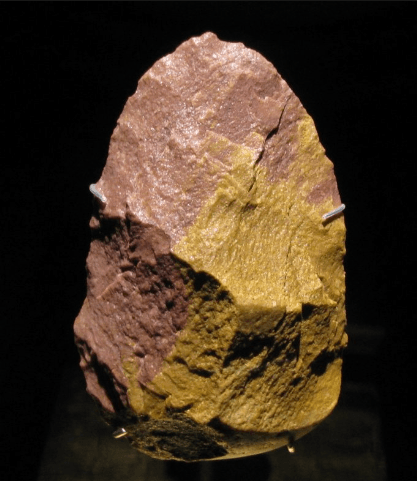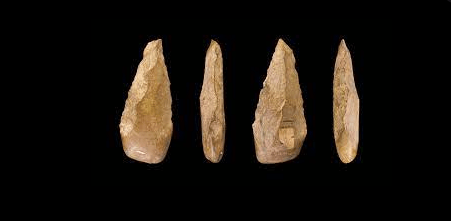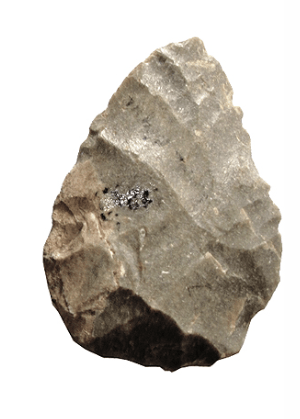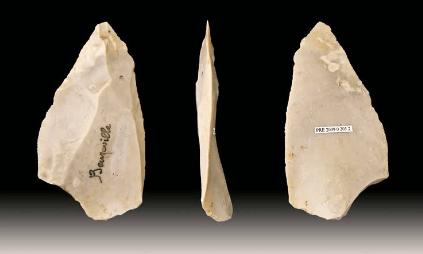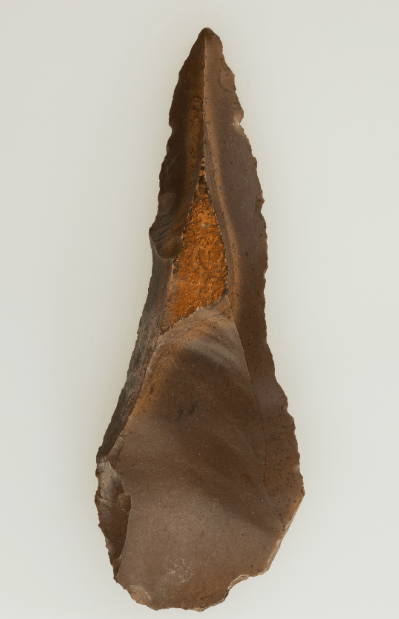Tools of the Homo Sapiens
Tools of the Homo Sapiens
For 1.5 million years the only stone tool humans could conceive of was the Hand Axe, but about 400,000 years ago that began to change.
For 1.5 million years the only stone tool humans could conceive of was the Hand Axe, but about 400,000 years ago that began to change.
The ability to make tools was once thought to be one of the defining characteristics of humankind. More recent work has revealed that that tools are used by many other animals. We don't know what types of tool our ancestors might have been made from perishable materials, like wood but we do know that for a very long time the hand axe was the only stone tool that humans could conceive of. To the right is an example dated from around 500,000 yrs ago, recovered from a cave in Atapuerca in Spain.
The earliest evidence we have for the use of a hand axe comes from Lake Turkana in Kenya, where 1.76 million years ago, homo erectus made one and left it on the ground. A hand axe is made by selecting a suitably sized piece of flint, that feels comfortable to grip, and then chipping away at it with another stone (known as a hammer stone) until an edge is created. From one flint stone you get one hand axe. The stone is heavy so it is possible that, unless it is a particularly well made axe (like the one shown above), once the hunter gather owner of the axe decided to move on, they would have dumped the hand axe rather than take it with them. At the next site where they would have started hunting again, a new axe would be created.
The Break Through
From northern France, about 400,000 years ago, we have evidence of a new technique being used. This new technique of tool creation is called the Levallois
technique.
So significant was this change judged to be that it is used to mark the boundary between the lower Paleolithic to the middle Paleolithic the old stone age and the new stone age).
The new way of working (knapping) stone involved preparing a raw block of stone by striking pieces off the edges until it is shaped like a turtle shell: flat on the bottom and rounded on the top. That shape allows the maker to create a series of similarly sized flattish, sharp stone flakes which can then be used as tools. These are smaller and lighter than the traditional hand axe and can be mounted onto spears, handled axes (and later arrows, although that will take further technological development) as well as being used to create knife tools to perform tasks such as flay skin and remove meat from the bone.
Perhaps the most amazing thing about this break through is that both Sapiens and Neanderthals apparently started using it at about the same same. Such technology transfer creates a couple of intriguing questions, which way was the technology flowing? What were the social conditions that facilitated such a transfer?
Related Projects
Related Projects
